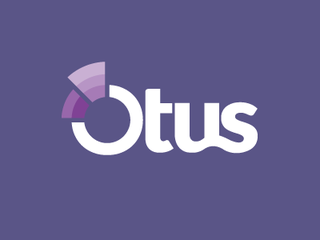Frequently Used Social Learning Tools
Blogger

Blogger is a site in which users can create their own blog. Blogger can be used in an educational context. A teacher could create a blog in which students could interact on. This would allow students to improve their writing and planning skills. Students would have to think about how they would write out their information on the blog in order to convey their message properly. Blogger provides opportunities for students to share what they wrote with their peers and with their caretakers. The blogs could also be a form of electronic portfolios that could show what the students created during the school year. Blogger has settings in which only people with permission can see or write on the blogs themselves. [7]

Facebook is an online communication tool that allows individuals to interact with each other within a virtual community. It has become the most popular social networking site since its beginnings in 2004. Facebook was co-founded in 2004 by Mark Zuckerberg with his roommates and colleagues from Harvard University. [8] Zuckerberg is presently the CEO of Facebook. [8] This online communication tool can be used for personal and for professional purposes. Technology plays an integral part of students' daily lives and teachers will need to find ways of implementing these technologies into their classrooms. [9] Research is currently being conducted on the benefits of implementing Facebook in educational settings and how it could potentially be used as a tool for teaching and learning, even if it is known for social networking in the first place. [10] For example, Facebook can be used to create discussion groups for group projects to divide the work and stay up to date with each other. It can also be used to share articles. Educators can also create professional Facebook accounts for their classrooms, which could be potentially used as a dashboard to upload course material and assignments. It can also be used to create polls to get some feedback and suggestions on the course that the teacher would like to implement. The objective is to improve the methods of teaching as well as the learning experience of students. [11] With the use of technologies, students are more engaged in their learning. [4]
Google Hangouts


Google Hangouts is a communication software platform that was created by Google. Some features of this social learning tool include starting a chat conversation or video call, phone calls through WI-FI or data and sending messages. All you need is a Google Account. [12] Google Hangouts has become an increasingly popular tool to participate and communicate with people around the world. It can be seen as a better version of Skype in the sense that it has the potential to record or have a group chat without the occasional availability issues that may be seen in the free version of Skype. [13] This makes it easily accessible and efficient in many ways. There are also many other useful tools from Google like Google Drive that allow users to take part in editing and sharing different content, assignments, and sources even when not together. It only takes an Internet connection and everything is saved in your own personal drive.
Instagram, founded in 2010, is a social networking app that was created for sharing photos and videos. [14] Used very frequently in today's society, Instagram can be seen as a great social learning tool through reaching the majority of the populations that have access to the Internet. It has become one of the most popular apps in the social networking world and is now used as a way to campaign companies or organizations. [15] It may be used for educational purposes by posting photos or 1-minute videos of information or subject content. It may also be used for photo essays or creating an organization or lesson. [16]
Khan Academy

Khan Academy, founded in 2006 by Salman “Sal” Khan, is a non-profit organization providing free online educational resources used by millions of people worldwide. [17] It is best known for its strong mathematics content provided through video tutorials. [18] The mathematics content is designed to help students from kindergarten to grade 12. [18] In 2009, Khan Academy began expanding its educational learning platform to include other subjects, including art history and computer science. [18] The mathematics section is also much more accessible since its recent translation into French. Khan Academy has also diverged to offering other means of learning beyond the online videos, including self-paced training exercises, quizzes, and dashboards for teachers to keep track of student progress. [19] There is also the coach resource section which provides guidelines to parents or teachers for example, who want to learn how to use Khan Academy. [19]
Khan Academy is used in majority by individuals outside of school for study purposes. However, in recent years, its use in educational settings has been increasing. [17] Some teachers have implemented the use of Khan Academy in their classrooms, believing it would simply be an adjunct to their instruction. However, it became more important than this. Some teachers are now thinking of “flipping” the normal functioning of classroom settings and including video tutorials from Khan Academy in their teaching. [20] The idea is to have students watch the videos or read the lectures provided by the teacher at home and to do the problem sets during class time. It has been shown that students are having the most difficulty when they are doing their homework. [20]

Pinterest is a web-based software platform that allows its users to share and discover new information through the use of pictures, descriptions, and short videos. It can also be seen as an online pin board where users can post on their board, collect from other boards, and privately share posted pins. [21] This can be useful in the classroom through having students post their works on their own board or a class board and to share (re-pin) information between their peers. It is easily accessible and is popular for its application that can be used on any mobile or smart device.
Skype

Skype is a free telecommunications tool that gives its users the opportunity to voice chat or video call between various devices such as laptops and cellphones. Although this application requires the Internet, it has grown to be one of the world's most popular communication tools. Skype is an excellent resource to use when collaborating with participants who are in remote areas because discussions and communication can still occur. Skype can be applied to classrooms in many ways. For example, it can be used as a way to include students who are at home due to illness into collaborative discussions held in class. [22]

Twitter is an established micro-blogging service available to individuals with Internet access world-wide and provides unlimited access to social networks for its users, to send and receive messages. In 2006, it was funded by Jack Dorsey, Noah Glass, Biz Stone, and Evan Williams. One of the common site users is media outlets to broadcast current news updates. [23] For this reason, people use Twitter as a daily source of information to inform themselves on local and world news. Another way that Twitter is utilized, is in the classroom, when a teacher builds a classroom account which can be viewed by their students. This account would allow teachers to post reminders for test revisions, assignment due dates, upcoming field trips and conferences, and review post lessons and answer homework questions. For future lesson plans, teachers could have students tweet what they learned from the previous class and reflect on the content and then engage in classroom discussions on Twitter. [24]
YouTube

YouTube is a video-sharing website founded in 2005 that was created for users to share, like, upload, and comment on videos. [25] Nowadays, YouTube can be used on many devices through applications like its YouTube app. Although it is mainly used for music, videos on reviewing items or how to do something, it may also be used for educational purposes. There are many accounts just for specific educational subjects like Crash Course, an account that focuses on subjects like anatomy, biology, chemistry and physics. YouTube can be a great social learning tool in education in many different ways: showing videos on different subjects in class or having students research how something works to answer questions, for homework or even to seek further knowledge. There are many platforms of YouTube that lead to other useful social learning tools for educational purposes. TED Talks created its account on YouTube, which provides videos of the best ideas from trusted voices discussing different issues, sharing knowledge or facts and opinions, sharing poetry and spoken word. [26] For education, TED has created its own platform called TED-Ed, which is essentially short TED Talks videos that may be used for information or insight purposes on many different school subjects. [27] There is even such thing as TeacherTube, which is another type of social learning tool similar to YouTube though initially created for education teachers. It may be used for teachers, students or parents through the use of published educational videos with a library of different content filled with videos, audio and pictures. [28]


